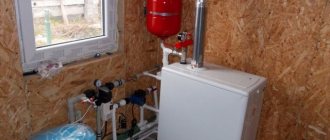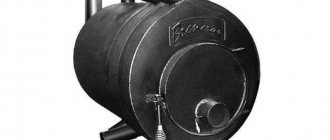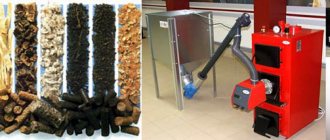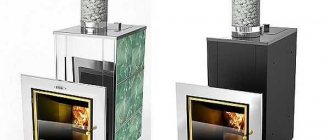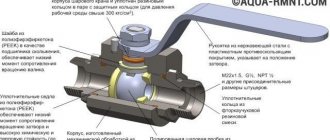The ability to regulate the temperature of heating radiators allows you to create a pleasant microclimate in the room and significantly save on utility bills in winter.
heating adjustment
The cost of coolants increases from year to year, so you need to know how to regulate the temperature of a heating battery in order to do it yourself, without involving expensive specialists. The uniformity of heating of all rooms in the home depends on the quality of this work.
Possibility of adjustment in different heating systems
Unfortunately, even in our time, it is not possible to regulate the temperature in the room everywhere, and, therefore, there is no point in installing special devices on batteries for this. This option is not available for those living in old apartment buildings, the heating system of which has a single-pipe distribution. In this case, the coolant is supplied from top to bottom, and it sequentially passes through all radiators before returning to the check valve. This heating system has many disadvantages:
- Uneven heating of rooms. Temperatures on upper floors may be higher than on lower floors.
- Temperature control is only possible for the whole house or a separate entrance using valves in the heating system.
A single-pipe heating system can be improved using a bypass, which is a jumper between the forward and return pipes. Then adjusting the heating batteries becomes possible.
Bypass for radiator
Nowadays, when designing apartment buildings, I rarely use a single-pipe wiring diagram. There is a two-pipe heating system; it does not have the disadvantages of the previous one. It also consists of distribution risers, but after each radiator the coolant immediately enters the return line. At the same time, the temperature at the entrances to the heating radiators on any floor is almost the same. Each battery can be equipped with a heat regulator, either manual or automatic.
A two-pipe heating system has an advantage over a single-pipe one.
Here you need to take into account that any changes to the heating system in an apartment building must be agreed upon with operating organizations and executive bodies.
If the home has an individual heating system, adjusting the temperature of the batteries is simplified. In this case it is necessary:
- Provide a powerful boiler in the heating system.
- Installation of forced pumping of coolant.
- Install a standard shut-off and adjustment or three-way valve on each battery.
Registers
This was a very simple and cheap solution in situations where large areas needed to be heated. Although if we talk about the heat transfer of a pipe in such a register in comparison with an aluminum radiator, the difference in efficiency is staggering. Due to the larger area of the radiator heat exchanger and the thermal conductivity of aluminum, modern equipment is undoubtedly preferable. And externally the registers looked quite rough.
However, for their time registers were acceptable due to their cheapness and simplicity. It can be noted that the welds on them were very strong, and pipe clogging did not interfere with their functioning.
What does adjusting radiators give?
The ability to adjust the temperature of heating radiators to suit your needs provides several advantages:
- Create a comfortable temperature in the room for its residents. There is no need to constantly open windows, create drafts and spend money on heating the street.
- Savings on heating are significant and can range from 25 to 50%. However, before adjusting the temperature of the radiator in the apartment, it is recommended to take a number of energy-saving measures. Install plastic windows, insulate interpanel seams, and insulate the walls. All these measures must be carried out before the start of the heating season, so as not to carry out work in emergency mode.
- Airing in the pipes is eliminated, the coolant moves freely inside and effectively transfers heat to the room.
- The ability to distribute heat evenly in all rooms.
- If necessary, you can maintain different temperature conditions in different rooms. Let’s say that in one you set the temperature to 25 ℃, and in the other it is enough to maintain 17 ℃.
Comfortable room temperature is the main advantage
It is obvious here that if it is possible to adjust the temperature of the radiators, then you should definitely take advantage of it. We hope that our article will help you do it right.
Prologue.
This year we are experiencing unprecedented frosts. In some areas of the republic, the air temperature dropped to -24ºС, which is an anomalous phenomenon for warm Moldova. I don’t have a thermometer hanging in my room, but I felt that my hand lying on the table began to freeze, and I had to put a piece of foam rubber under it.
We, in general, like the Amundsens, are already accustomed to the coolness, but yesterday the chairman of our condominium, while collecting signatures for an appeal to the heat supplier, asked what the air temperature was in our apartment. It is unlikely that the heat supplier will increase the temperature of the coolant, but perhaps the chairman wants to demand a penalty under the pretext of providing poor-quality services.
Be that as it may, this event first prompted me to measure the air temperature in the apartment, and then to conduct this experiment.
Of course, to say that this experiment was unclean is to say nothing. There are too many variables that could affect the accuracy of the result, from the direction of the wind overboard to the activity of the computer running in the room being tested.
But the most important parameter, which at another time would not have allowed this experiment to be carried out at all, is the stability of the coolant temperature.
The fact is that in warmer periods of time, the temperature of the coolant is actively regulated during the day to save energy consumption. When the temperature outside is abnormal, all the valves open wide.
Types, device and methods of adjustment
Before we find out how a battery-powered thermostat works, let’s remember the principle of operation of a heating radiator. Structurally, it consists of pipes through which the coolant moves, and metal sections that give off heat as it heats up. The sections are specially shaped, which improves air convection, making room heating efficient.
General scheme of work
The greater the power of the heating boiler, the more it heats the coolant, the higher the temperature in the building. By reducing the volume of water passing through the radiator, we can reduce it.
For this purpose, special thermostats and valves are used. Here you need to understand that in this way we can only reduce the temperature in the home, and thermostats will not be able to increase it. If you need a higher temperature in the room, then it is more effective to increase the power of the heating device or increase the number of radiator sections.
Important! The material of the radiator, on which the inertia of the heating system depends, is also important. If the batteries are cast iron, then there is no point in having a thermostat. Since cast iron, having a large mass, changes temperature too slowly and the result of the adjustment will have to wait a long time. But aluminum heats up quickly and cools down quickly.
How to increase the heat of batteries?
If a powerful radiator does not produce enough thermal energy, then you can try the following measures. Check if the pipes and filter are clogged. Construction waste often gets into the heating system. Moreover, this can be both in the old system and in a new building.
Dirt and rust in radiators
If cleaning does not help, then drastic measures remain to be taken:
- Increase the number of sections.
- Increase the temperature of the water that goes into the batteries. This is only possible in an autonomous heating system.
- Check the connection type and replace it if necessary.
- The installation location of radiators also affects heat transfer. It may be advisable to move the radiators.
If the heating system contains radiators with temperature control, then they must have a power reserve, although this may lead to an increase in its cost during arrangement and installation.
Types of control valves
Modern heating radiators allow the installation of special taps on them, which are installed using pipes. According to the principle of action they are:
- Ball. Used to completely block the flow of water into the battery. This valve has positions: open and closed. It makes it possible to carry out repairs without stopping the operation of the entire heating system. Refers to cheap fittings and is not used to regulate temperature.
- Needle valve. A special feature is that it blocks the coolant passage 2 times. Mounted in front of the monometer, it is used mainly during its maintenance and repair, as well as to avoid water hammer when opening the shut-off valves too quickly.
- Standard. These are simple budget control valves. They do not have any scale for setting the temperature. By turning the valve you can reduce the temperature by an indefinite number of degrees. But, nevertheless, they allow some kind of adjustment.
- Three way valve. It has a T-shape with an adjustable locking mechanism. Used to regulate coolant in single-pipe heating systems. There are connecting and separating types. Depending on this, it can have 2 inputs and 1 output or 2 outputs and 1 input. A three-way valve is installed on the bypass.
- With thermal head. You can more accurately regulate the temperature of the batteries. There are mechanical and automatic regulators.
Three way valve
For manual adjustment, special valves with direct or angular connections are used. By turning the tap, the amount of coolant in the battery is adjusted. In the closed position, the lock is lowered and the water is completely shut off.
Having a mechanical valve is quite difficult to maintain a constant temperature in the building, but for all their simplicity, such valves have their advantages:
- Reliability, small debris that gets into the heating system cannot damage them.
- Low price.
Of course, few people are satisfied with such a primitive temperature setting. Most people living in heated buildings are interested in how to regulate the temperature of a heating radiator using taps with thermal heads. They are called thermostats.
Mechanical valves
How does a thermostat work and how does it work?
The thermostat or thermostat can be functionally divided into 2 parts. Thermal valve is its lower part, usually metal or brass. The thermal head is the upper part that fits onto the thermal valve.
Thermostat device
Manufacturers often make a thermal valve unified so that different types of thermal heads can be used with it, with different controls, which can be mechanical or automatic. Thus, you can always change the temperature control method.
The thermal head is structurally a bellows with a liquid or gas filler, inserted into a cylindrical base, capable of responding to fluctuations in coolant temperature. The operating principle of the battery thermostat is as follows. As the temperature increases, the liquid or gas expands, which leads to a change in pressure on the shut-off rod (which is a spring), which moves and blocks part of the coolant flow.
When cooling, the spring contracts and opens up space for hot water, which begins to heat the radiator more strongly. Using a control valve with a thermal head, you can regulate the temperature in the room with an accuracy of 1 C.
Thermal head device
Thermal heads come in different types:
- With built-in thermocouple. They have become the most widespread, since mainly heat consumers have the opportunity to install them parallel to the floor so that the air in the room envelops them unhindered.
- With remote temperature sensor. It happens that the radiator is located behind curtains made of thick material, under a wide window sill, or close to a heat source. Then it is not possible to install the thermal head freely and it is made with a sensor, which is connected through tubes from 2 to 10 meters long.
- With external regulator. It happens that access to the radiator is difficult due to decorative elements, such as grilles. Then it is convenient to place the temperature regulator on the wall.
- Electronic programmable. Its circuit contains a temperature sensor, which is triggered by temperature fluctuations every 1-2 minutes and instantly sends a signal to the electric motor, which moves the rod of the thermal valve, which regulates the volume of coolant. Temperature adjustment is quick and precise. A big advantage is the ability to program the temperature by day and time interval. For example, you can set specific values for the weekend, morning, afternoon or evening.
Electronic thermostat with remote sensor
Thus, it is most convenient to adjust the room temperature using a thermostat with an electronic sensor. You only need to set the desired room temperature, and the sensor makes sure that it is maintained. The temperature can be adjusted from 6 to 26 C.
With the help of thermal heads, precise temperature control is achieved, saving coolants up to 40-50% and maximum thermal comfort.
Sequence of work for adjusting batteries
Adjustments must be made before the start of the heating season. First of all, air is released on each heating radiator until water starts running. To do this, air drain valves, such as the Mayevsky valve, are installed on the battery during installation. Sometimes automatic air vents are installed.
The Mayevsky tap has a recess for a screwdriver or key, where they are inserted to open a cone-shaped hole, which is closed by a shut-off cone. One turn is enough to bleed air. As soon as water comes out, the hole must be closed.
Important! Do not unscrew the shut-off cone completely, otherwise the pressure in the system will not allow it to be screwed back on.
The next step is to adjust the pressure in the radiators. On the battery closest to the boiler, you need to open the shut-off valve by 2 turns, on the 2nd radiator - by 3, etc. This way, the pressure in the system will be divided evenly among the batteries, ensuring the free passage of coolant. Next, you can adjust the room temperature using the thermostat.
Setting up thermostats
Small details.
To quickly and accurately measure the temperature of a steam heating battery, it is enough to apply a small amount of “KPT-8” thermal conductive paste to the sensor ball of a digital thermometer. During the measurement, the contact area should be covered with several layers of fabric or a layer of foam rubber.
The above experiment made me question the accuracy of my digital thermometer. To make sure his readings were correct, I compared them with the readings of a mercury thermometer. To do this, I immersed both thermometers in hot water to the same depth and monitored the readings as the water cooled.
Prolonged operation of fans immediately revealed the weak point of modern devices.
If the 1973 Penguin fan has a front sliding bearing equipped with an oil seal (the arrow marks the hole for filling the oil seal), which has allowed it to work for almost 40 years, then in a modern fan there is no trace of such an oil seal.
In addition, the Penguin has a spring that prevents longitudinal vibrations of the shaft. The new fan, after two days of operation, began to rattle, because due to the longitudinal runout of the shaft caused by the eccentricity of the propeller, one of the fluoroplastic gaskets quickly wore out.
To eliminate the longitudinal play, several ordinary and two thin-walled washers were needed, as well as a gasket cut from foam rubber.
First I disassembled the stator.
Then I put thin-walled washers and a gasket on the motor shaft, and used the remaining washers to increase the gap between the bearings.
To ensure any long-term operation of the fan, I cut out an oil seal from felt, and a seal plug from some nylon cover and pressed it all into the recess around the shaft. Naturally, I didn’t skimp on the oil either.
I started thinking about buying two dozen 120mm computer fans. I think if you install them directly between the battery sections, it should reduce noise and increase heat transfer efficiency.
Recommended radiator thermostat settings for different rooms.
The comfortable temperature for different rooms differs; the table shows the recommended thermostatic head settings for each of them.
| Position on regulator | Room temperature | Mode or type of room |
| * | 7℃ | Frost protection |
| 1 | 15℃ | Staircases and halls |
| 2 | 18℃ | Bedrooms |
| 3 | 21℃ | Living rooms |
| 4 | 24℃ | Bathrooms |
| 5 | 27℃ | Maximum temperature setting |
Estimated indicators
To calculate the power of heating equipment, as well as to find out the scale of heat loss during transportation of the coolant, it will be necessary to remove heat from the pipe at certain temperatures of the liquid inside it and the air outside. The thermal insulation layer serves as an additional parameter.
The formula for calculating the heat transfer of a steel pipe looks like this:
Q=K×F×dT, in which:
Q – the desired result of heat transfer from a steel pipe in kilocalories;
K – thermal conductivity coefficient. It depends on the pipe material, its cross-section, the number of heating circuits, as well as the temperature difference between the outside air and the coolant;
F is the total surface area of a pipe or several pipes in the device;
dT – temperature pressure, that is, ½ the total temperature of the liquid at the inlet and outlet of the pipe minus the air temperature in the room.
If the pipes are additionally wrapped in a layer of thermal insulation, then its efficiency in percentage terms (the amount of heat passed through it) is multiplied by the resulting heat transfer rate.
For example, let’s calculate the heat transfer of a register made of three pipes with a cross-section of 100 mm and a length of 1 m. The temperature in the room is 20 ℃, and the coolant, when passing through the pipe, cools from 81 to 79 ℃.
According to the formula S=2pirh we calculate the surface area of the cylinder:
S= 2×3.1415×0.05×1=0.31415 m2. If there are three pipes, then their total area will be 0.31415 × 3 = 0.94245 m2.
Indicator dT = (79+81):2-20 = 60.
The value of K for a register of three pipes with a temperature head of 60 and a cross-section of 1 meter is taken equal to 9. Therefore, Q = 9 × 1 × 60 = 540. That is, the heat transfer of the register will be equal to 540 kcal.
Thus, we examined the concepts of heat transfer, as well as ways to minimize the heat loss of a steel pipe for certain cases. There is nothing very complicated about this. The main thing is to approach the issue responsibly.
The most popular manufacturers of thermal heads
The market offers a wide range of thermal heads of various designs. These are liquid and gas thermal heads with a built-in thermoelement; they perfectly perform the main task of regulating the temperature in rooms. They also have an attractive design and original complement to the interior of the room.
Danfoss
The Danish company produces a large range of gas condenser and liquid thermal heads. Gas thermoelements are produced in series from RA 2000 to RA 2991, also available with a remote sensor RA 2992, anti-vandal - RA 2920. The range of temperature settings for these devices is 5-26 ℃, the waiting time is a maximum of 12 minutes. There is a function to protect the coolant from freezing, the ability to limit or block changes in the set temperature scale.
Danfoss RA 2920
Liquid thermoelements from this manufacturer are produced in the following series:
- RAE;
- RAW;
- RAS-C;
- RAS-C2.
Danfoss produces a series of premium thermostats, living eco and living connect, with a backlit display and powered by AA batteries. These thermostats have settings programs that allow you to reduce the room temperature to 17 ℃ at night and during working hours.
Living connect series thermostats are often used as part of intelligent smart home systems. Both series allow you to control the thermostat from your mobile phone via Bluetooth.
Danfoss Living Eco
Oventrop
The German manufacturer positions itself on the market as a manufacturer of high-quality engineering fittings. Exclusive products from Oventrop create special accents in the room. The design and color scheme match the interior, as well as the shape and color of the elegant radiators.
The thermostat for heating batteries "Pinox" not only attracts attention with its design, but also impresses with its functionality. The thermostat is supplied with M 30 x 1.5 thread and clamp connection. It allows you to easily and accurately adjust the temperature in the building. Thanks to its one-piece design, the regulator is impervious to dirt and easy to clean. Works without a power source.
Oventrop Pinox thermostat
The "Uni SH" thermostat with liquid element and threaded connection M 30 x 1.5 is easy to operate and has a clear scale. The thermostat has a raised mark for the visually impaired. The selected setting value can be marked using a memo puck.
Oventrop Thermostat Uni SH
Heimier
Also a well-known German brand, it produces more than 12 types of thermal heads. These are mainly liquid regulators with connection type M30*1.5, M28*1.5, which is most often used in our country.
Liquid thermal head HEIMEIER D
Among them you will find different thermal heads by design:
- with remote sensor;
- with a remote control mechanism;
- anti-vandal for installation in public places.
Heimeier F thermostat with remote adjustment
Radiator painting
Heat transfer depends not only on the size, but also on the color of the heating device. Snow-white radiators look beautiful and fit into any interior, but dark or black ones heat 10-15% better.
It may not be much, but if you can paint a battery brown, blue, burgundy or another rich shade in a matter of minutes without compromising the design, why not do it?
Video description
How to reduce battery heat dissipation
Contact utility companies
Problems in high-rise buildings are resolved by the management company. According to the rules, residents should not directly contact workers servicing the heating network. It is better for the inhabitants of the problem apartment to write a statement to the Criminal Code. If the complaint is not considered, then they further contact Rospotrebnadzor and the housing inspectorate.
The appeal will be investigated if the problem of too high a temperature is observed in other residents. In high-rise buildings, people on the lower floors often suffer from the heat, while those on the upper floors freeze. Utility workers turn up the heating as much as possible, which leads to discomfort.
The management company must carry out balancing. After correction, the temperature of all residents should return to normal. If the weather forecast predicts a sharp cold snap in the coming days, workers may ignore the request.
Heat loss through pipes
In a city apartment, everything is simple: the risers, the supply lines to the heating devices, and the devices themselves are located in a heated room. What's the point of worrying about how much heat the riser dissipates if it serves the same purpose - heating?
However, already in the entrances of apartment buildings, in basements and in some warehouses, the situation is radically different. You need to heat one room and supply coolant to it through another. Hence the attempts to minimize the heat transfer of the pipes through which hot water enters the batteries.
Thermal insulation
The most obvious way to reduce the heat transfer of a steel pipe is to insulate the pipe. Twenty years ago there were two ways to do this: recommended by regulatory documentation (insulation with glass wool wrapped with non-flammable fabric; even earlier, external insulation was generally made solid using gypsum or cement mortar) and realistic: pipes were simply wrapped in rags.
Now there are a lot of quite adequate ways to limit heat loss: here are foam linings on pipes, and split shells made of foamed polyethylene, and mineral wool.
These materials are actively used in the construction of new houses; However, in the housing and communal services system, the limited budget, politely speaking, leads to the fact that pipes in basements are still simply wrapped with piss... um, torn rags.
Conclusion: how to make your apartment warmer
In fact, it is impossible to actually increase the amount of heat without changing the input parameters of the system (radiator material, its size, heating temperature). Using the above methods, there is a chance to use this heat more efficiently - completely, with maximum efficiency and optimal distribution in the apartment. For example, a screen will prevent thermal energy from being lost, and a fan will allow the warm air flow to spread more evenly.
If the apartment is cold, and this interferes with the normal life of the owners, more radical measures will have to be taken. These include:
- replacing old cast iron batteries with modern bimetallic radiators;
- “increasing” the number of sections on the battery;
- insulation of the wall behind the radiator and installation of a powerful steel screen.
When carrying out a major overhaul of the heating system, you need to remember: even the highest quality appliances need to be updated after 20–25 years, as their service life is coming to an end. It is worth choosing batteries from the most “advanced” materials of modern design - they are the most energy-intensive and will certainly help make the apartment warmer and more comfortable.
Fans
To make the room warm up faster from radiators, you can use fans. The easiest way is to install several computer coolers under the battery. Warm air from radiators is known to rise. As it cools down, it sinks down. Coolers installed under the battery speed up this process.
New beginnings or prosperity: one of the 5 cards with butterflies will tell you about the future
The 2022 World Cup is coming soon: the Russians will play away against the Malta team at the end of March
The simplest way to lose weight is called healthy sleep
Gas thermostats
The advantages of gas devices include:
- smooth temperature control;
- the thermostat determines the temperature in the room, it is not affected in any way by the heating of the coolant, since the gas is concentrated in the cold part of the sensor, far from the control valve;
- sensitive instant response to microclimate changes.
Thermostat for heating manufactured by Danfoss
The leader in sales of gas thermostats for heating radiators is Danfoss, a famous company from Denmark. The equipment they produce is famous for its reliability and durability. The service life of Danfoss devices is over 20 years.
Summarize
There are many ways to increase the heat output of heating radiators. Today we looked at only the main ones. However, it should be remembered that it is always easier to think through everything in advance, at the installation stage, than to put in a lot of effort later, without the confidence that the result will be significant. Unfortunately, in Russia everything is done at random. The final advice from the Homius.ru editors would be this: think about the future and spare no expense during installation. The financial resources saved today can turn into costs tomorrow that will be many times greater than your savings.
The most optimal option is that all the heat rises, which creates normal heat exchange
We hope that the information presented in today’s article was interesting and useful to our dear reader. Despite the fact that we tried to present everything in sufficient detail, you may still have questions about the material. In this case, ask them in the discussions below - the Homius.ru editors will be happy to answer them as quickly as possible. If you know a way to improve the heat transfer of radiators that is not reflected in today’s article, please share it with other home craftsmen - this information will be very useful. And finally, we suggest watching a short but quite informative video on today’s topic.
Removing air through a bleeder in aluminum, bimetallic and cast iron batteries
The advantages of aluminum batteries are their affordable price and excellent thermal conductivity. But aluminum is not a very good heating material due to its ability to react and release hydrogen. When such a battery is air-filled, a Mayevsky crane will help solve the problem of dumping excess air. In order to expel hydrogen from the inside, such batteries are covered with a special film, but this is only enough for a while, and then the gas is not removed.
Bimetallic radiators are another great invention. Where the internal parts touch the water, a different metal is used, and the fins are made of aluminum. In cases where a thermostat is installed on the radiator, opening it allows you to bleed the system and release oxygen. The airing of such radiators is similar to other types.
Cast iron batteries are also vented through a Mayevsky tap or an automatic air vent, thanks to which plugs in the pipes can be removed.
Reasons for poor heat transfer
The efficiency of the heating system in an apartment is influenced by various factors. The efficiency of batteries depends most on the following conditions:
- material for the manufacture of pipes, radiators;
- the size of each radiator in the room;
- hot water circulation speed within the system;
- liquid heating temperature.
If the above indicators are optimal, but heat dissipation is still low, the cause may be contamination of the battery from the inside. This occurs due to the accumulation of rust, dirt, scale, plaque, and solder. In old houses, professional cleaning of pipes, radiators and risers often seriously increases their heat transfer.
Flushing cast iron radiators
In addition, covering the batteries with decorative boxes or painting too frequently, as a result of which the metal remains covered with a very thick layer of paintwork, can reduce the efficiency of the system. Risk factors include air pockets inside the pipes, as well as external contamination of the radiators.
Coloring
It was noticed that dark-colored radiators warm up rooms much better than light-colored ones. By painting radiators brown, you can increase their heat transfer by 20-25%. Batteries need to be painted with special heat-resistant enamel.
In this case, it is advisable to remove the layer of paint already on the radiators. Several layers of paint are also a kind of heat insulator. Therefore, it will not be possible to obtain the effect of repainting.
Cake with coconut, cream and chocolate spread: a dessert made from simple ingredients
Labeling makes it impossible to counterfeit Sputnik V vaccines
Scientists are looking for answers: what food will remain edible after thousands of years
Heat loss
No less often, the high thermal conductivity coefficient of a steel pipe must be considered as a negative factor. When heat needs to be delivered to the final point to the consumer with minimal losses, the conductivity of steel should be reduced. This need arises on main pipelines and heating mains laid on the surface.
To reduce it to an insulating shell made of mineral wool or expanded polystyrene, use foil thermal insulation that screens the infrared spectrum of radiation. You can also take steel pipes insulated with several layers of foamed polyethylene in production.
To determine the effectiveness of the insulation used, a standard calculation of the steel pipe is made using the heat transfer coefficient. But the result is multiplied by the efficiency of the insulating material. The difference between the two intermediate results will show how effectively the coolant temperature inside the pipe is maintained. If the figure turns out to be unsatisfactory, the thickness of the insulating shell should be increased or a material with lower thermal conductivity should be selected.
WATCH THE VIDEO
In everyday life, the use of decorative screens or hanging appliances, as is the case with a heated towel rail, leads to heat loss and a decrease in the efficiency of steel heating pipes. It is also undesirable to install such equipment in wall niches. The pipes themselves are not to blame for these losses, since they regularly heat the surrounding air and objects, but what this heat is spent on is a question for the owners.
Calculation of the heat transfer of a pipe is required when designing heating, and is needed to understand how much heat will be required to warm up the premises and how long it will take. If installation is not carried out according to standard designs, then such a calculation is necessary.



